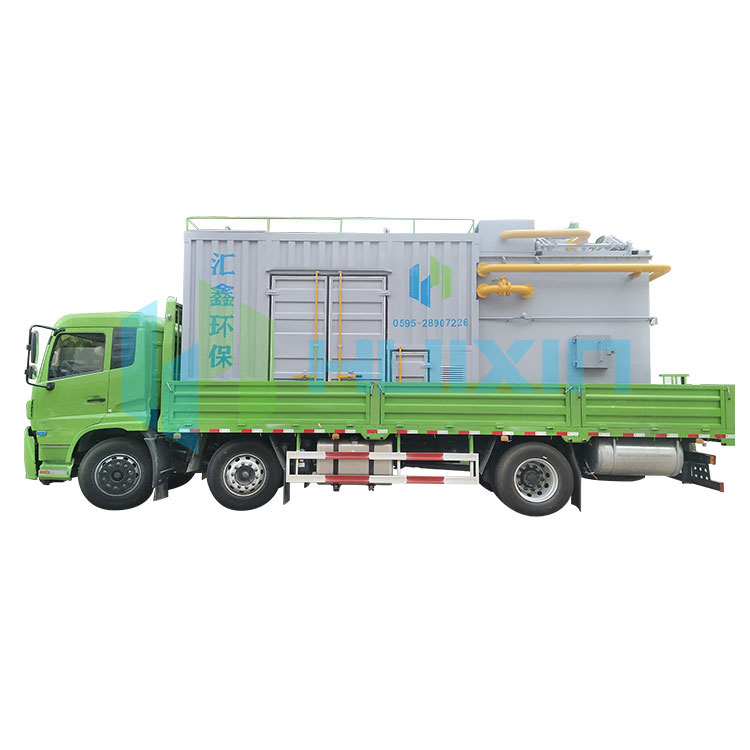 English
English Español
Español  Português
Português  русский
русский  Français
Français  日本語
日本語  Deutsch
Deutsch  tiếng Việt
tiếng Việt  Italiano
Italiano  Nederlands
Nederlands  ภาษาไทย
ภาษาไทย  Polski
Polski  한국어
한국어  Svenska
Svenska  magyar
magyar  Malay
Malay  বাংলা ভাষার
বাংলা ভাষার  Dansk
Dansk  Suomi
Suomi  हिन्दी
हिन्दी  Pilipino
Pilipino  Türkçe
Türkçe  Gaeilge
Gaeilge  العربية
العربية  Indonesia
Indonesia  Norsk
Norsk  تمل
تمل  český
český  ελληνικά
ελληνικά  український
український  Javanese
Javanese  فارسی
فارسی  தமிழ்
தமிழ்  తెలుగు
తెలుగు  नेपाली
नेपाली  Burmese
Burmese  български
български  ລາວ
ລາວ  Latine
Latine  Қазақша
Қазақша  Euskal
Euskal  Azərbaycan
Azərbaycan  Slovenský jazyk
Slovenský jazyk  Македонски
Македонски  Lietuvos
Lietuvos  Eesti Keel
Eesti Keel  Română
Română  Slovenski
Slovenski  मराठी
मराठी  Srpski језик
Srpski језик
How Long Does it Take to Install and Set up a Mobile Waste Incinerator?
2024-09-23

What types of waste can be incinerated by a Mobile Waste Incinerator?
A Mobile Waste Incinerator can be used to incinerate various types of waste, including:
- Medical waste, such as syringes, gloves, bandages, and biological waste
- Hazardous waste, such as chemicals, solvents, and laboratory waste
- Kitchen waste, such as food scraps, packaging materials, and plastic
- Animal carcasses and farm waste
- General waste, such as paper, cardboard, and wood
How long does it take to install and set up a Mobile Waste Incinerator?
The time required to install and set up a Mobile Waste Incinerator depends on various factors, such as the model of the equipment, the location, and the type of waste to be incinerated. Generally, it takes 1-2 days to assemble and commission a Mobile Waste Incinerator. However, more time may be needed for site preparation, testing, and training.
What are the advantages of using a Mobile Waste Incinerator?
The advantages of using a Mobile Waste Incinerator include:
- Flexibility and mobility
- High combustion efficiency and low emissions
- Reduced waste volume and weight
- Minimized risks of pollution and disease transmission
- Eco-friendly and cost-effective
How to maintain and operate a Mobile Waste Incinerator?
To ensure the safe and efficient operation of a Mobile Waste Incinerator, it is essential to follow the manufacturer's instructions and guidelines. The operator should be trained and qualified to handle and monitor the incineration process. Regular maintenance and inspection are also necessary to check the equipment's condition, replace worn parts, and clean the chambers and filters. Safety measures, such as fire alarms and extinguishers, should be in place in case of emergencies.
In conclusion, Mobile Waste Incinerator is a practical and customizable solution for waste management in various fields. Its advantages in terms of mobility, efficiency, and sustainability make it a popular choice for businesses and organizations seeking to reduce their environmental impact and improve public health and safety.
Fujian Huixin Environmental Protection Technology Co., Ltd. is a leading manufacturer and supplier of Mobile Waste Incinerator in China. Our products comply with international quality and safety standards and are widely used in different industries and regions. To learn more about our products and services, please visit our website https://www.incineratorsupplier.com or contact us at hxincinerator@foxmail.com.
Research Papers:
1. Author: Li, M., et al.
Year: 2020.
Title: Development and demonstration of a mobile medical waste incinerator.
Journal: Environmental Science and Pollution Research.
Volume/Issue: 27(31), 39219-39228.
2. Author: Zhang, S., et al.
Year: 2019.
Title: Comprehensive evaluation of a hazardous waste incinerator: A case study.
Journal: Journal of Cleaner Production.
Volume/Issue: 222, 388-397.
3. Author: Kim, D., et al.
Year: 2018.
Title: Environmental and economic analysis of kitchen waste incineration with heat recovery.
Journal: Renewable Energy.
Volume/Issue: 116, 282-290.
4. Author: Bosmans, A., et al.
Year: 2017.
Title: Evaluation of animal carcass disposal methods during a livestock disease epidemic.
Journal: Agricultural Systems.
Volume/Issue: 156, 13-21.
5. Author: Liu, J., et al.
Year: 2016.
Title: Life cycle assessment of waste-to-energy incineration in China: Challenges and recommendations.
Journal: Journal of Cleaner Production.
Volume/Issue: 126, 255-266.
6. Author: Gao, X., et al.
Year: 2015.
Title: Municipal solid waste incineration: Study of non-hazardous metallic emissions from a grate-based incinerator.
Journal: Fuel.
Volume/Issue: 147, 1-9.
7. Author: Wang, J., et al.
Year: 2014.
Title: Economical and environmental evaluation of a new waste-to-energy incineration system.
Journal: Journal of Environmental Management.
Volume/Issue: 135, 141-149.
8. Author: Yang, J., et al.
Year: 2013.
Title: Characteristics of PCDD/F emission from a hazardous waste incinerator in China: Effect of waste type and operation conditions.
Journal: Journal of Hazardous Materials.
Volume/Issue: 260, 600-607.
9. Author: Yu, Y., et al.
Year: 2012.
Title: Life cycle assessment and economic analysis of a waste-to-energy incineration plant in China.
Journal: Waste Management.
Volume/Issue: 32(4), 673-679.
10. Author: Chen, H., et al.
Year: 2011.
Title: Environmental assessment of medical waste incineration in a rotary kiln.
Journal: Waste Management.
Volume/Issue: 31(9-10), 2069-2077.




